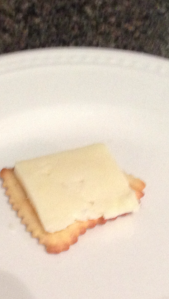Many thanks to Douglas @salguodmai for being a supportive member of the #doc during the initial stages of writing this. And have I mentioned that he runs more miles in one weekend than I probably have in my lifetime?! Inspirational! Also, here’s a big shout out to Scott @Scott_InTheD for his Quotes that stick blog post, the concept of which I am borrowing here (with a somber spin on it- you’ve been warned!) with his permission.
“Sticks and stones may break my bones, but words will never hurt me.” Maybe on Opposite Day?
Diabetes scares the people who love us on occasion. In moments of weakness or misunderstanding, they may say things that hurt us, often unintentionally. This blog post has been batting around in my head for a few weeks now, and my inner English major keeps reminding me to let it out.
Words from others are only words. They do not have to define us, but they may explain things like the subliminal pain masked by epic Twitter rants or the irrational self-blame that we impose on ourselves when the CGM graphs look like Mount Everest. It’s sometimes there in the background, that internal voice that says you’re not good enough. The truth is that you are doing your best despite a rather difficult job as a substitute pancreas. Choice of words perhaps clouds this idea.
To quote Jay-Z, “Allow me to reintroduce myself.” Or at least to explain where I’m coming from on the bad days.
*****
“You’re a straight-A student, but you still can’t get it through your head!”
You’re right. I should have bolused more and eaten fewer carbs. But guess what? I’m going to be diabetic for a long, long time, and there’s always tomorrow. I messed up at a disease where you can give 110% and still not see the results that you want to see. I could do without the lecture.
^ That’s what I should have said. In reality, I probably walked away, did my homework to maintain those A’s, and hid my tears. And for the record, I’m still a straight-A student in grad school, and I still can’t get it through my head. But I know now that trying counts for a whole lot.
“If you didn’t eat _____, your blood sugar wouldn’t be 400.”
Because everyone loves a blood sugar value of 400…
“It IS your fault!”
No, it’s really not. My diabetic relative was simply trying to maneuver through a social setting, forgot about this pain-in-the-ass illness for a few minutes, and didn’t bolus until after the meal. You try doing this job and see how you like it.
“If this was Survival of the Fittest, you’d be long-gone by now.”
At the time, I laughed with the rest of the group. We were naïve high schoolers and the joke was not as tasteless as it looks on paper now. But there is that element of survivor’s guilt that still lingers. What if I had been born in another place or another time? He’s right; I wouldn’t have survived. But am I not ‘fit’ to survive as one of the ‘fittest’ now?
The consolation is that it isn’t another time, nor another place. It is here and now. I’m here. You’re here. Right now. We have survived as type one diabetics. It’s not a question of Why? but a question of What are we going to do with this life? We’re all doing a decent job in my book.
“Tons of people use the insulin pump. You’re the only one who had the problem, so it must be you.”
Look, diabetes is a blame game in society. We all experience this to some degree. What hurts is when people you love, who you’ve explained this to a million times before, take the cop-out option here. It’s easy to shrug pump problems or whatever it may be off on the user, the person with diabetes. None of us should ever have to defend actions we take to preserve our health, however unconventional they may be.
What I really want to say to you is that we both love each other. I do not want to keep rehashing the difficult stuff. You should inherently respect the decisions that I make regarding my own health. I may never know exactly why my pump problems happened, but they did. And every doctor and nurse involved came to the same conclusion: the issue was not caused by me, but by the product. I don’t want to have to prove it to you over and over again. I have moved forward, and I would like you to move along with me.
“I’ve learned a lot from watching you handle your degenerative disease.”
Who said it’s degenerative? Not me.
Sure, there’s the term “complications” which none of us like to hear. But the good news with diabetes is that it doesn’t always have to be “degenerative.” We have a lot of tools in our toolboxes at this stage of the game. These tools enable us to potentially live better than those with diabetes in the past may have lived.
Diabetes will never be a walk in the park, for me at least, but I refuse to go down without a fight. And I also know that if it does become “degenerative,” it is not my fault. It will hurt, yes, but it is not my fault. There are too many outside factors that affect diabetes to hold myself solely accountable. For starters, I’m snitching on faulty islet cells, stress, hormones, inaccurate carb counts, exercise, not enough exercise, and many more variables which are all guilty as charged. But heck, there’s nothing “degenerative” about a heart and soul that refuses to stop fighting the good fight- whether we are speaking about diabetes or any other challenge. Keep doing your thing, #doc.
“If I were managing someone else’s diabetes and could take insulin freely with no personal repercussions [hypos and hypers] experienced, I’d be a good diabetic.” -Me
“Are you aware of your language?” –My doctor
What? I didn’t swear, did I?
“Good diabetic” and “bad diabetic” don’t exist. There is the diabetic, or the person with diabetes, or whatever you choose to call yourself. There is the human being, who is more than diabetes. But let’s lose the self-destructive adjectives. There is only the doing-the-best-I-can-diabetic.
“Camping. Soccer in Montreal. St. Patrick’s Day Parade. There are so many things that I still want to do with you.”
My former college roommate said this genuinely and nonchalantly. We were planning future trips with friends and daydreaming of warm summer weather. What resonated with me was how much I wanted these things, too, and how far away they had seemed a few short months ago when it felt like diabetes had the upper hand. There are so many things that I still want to do with my friend, and with others, too. Thankfully, I’m going to be around to do them now, whether diabetes likes it or not.
“You’re not saying you can’t do something. You’re asking for help. We all do it. It’s life.” -My boss
Wait, I’m not weak if I ask for help? (Sarcasm)
Also, you are a really cool boss. (Not sarcasm. That was a significant learning moment for me.)
*****
My doctor and I are working on this thing that we call The Wall. Sometimes I let her remove a brick from the wall with a tiny chisel. Other times I try to deflect attention away to something of lesser pain value. I email her when I take a big bolus, a number that would have frozen me in fear in the past. A few bricks tumble down. We cheer via email and smiley face emoticons. Slowly but surely, our masonry skills are improving.
The Wall impacts how I feel about and handle my diabetes management at times. It’s a learning curve, and there are days when I am not proud of my behavior or my attitude. There are disheartened tweets which I later feel guilty about. Curse words may be said to people who I care deeply for. Feeling sick is no excuse, but sometimes feeling sick negatively affects my emotional inhibitions.
I joined the #doc with the promise of being transparent, so I’m confessing my stumbling blocks here and giving my written word that I want to work on this. I hope to one day sledgehammer the stumbling blocks- rather, the bricks- into smithereens.
If this post rings all-too-familiar to you, I want you to know that you can be a straight-A student and still not get it. Please know that it is okay. You are smart, not dumb. You are a fighter, not a failure.
Maybe diabetes is not yet meant to be fully understood? Just show up every day and work on it. That’s all anyone should ever ask of you.






